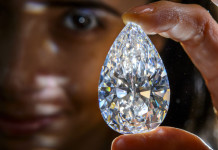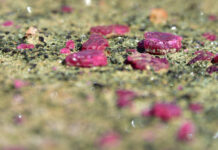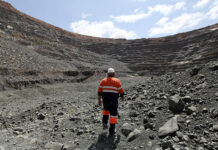
The question hanging over Petra Diamonds’ plans to ramp up output by 1.3 million carats over the next three years is whether this production is going to coincide with a structurally weaker diamond market. Structural threats to diamond prices are a weaker global economy and competition from lab-grown diamonds.
Petra Diamonds CE Richard Duffy said the group’s first tender of 2024 showed “persistent softer market conditions” amid a more subdued global economy in the year ahead.
Although he forecast that diamond prices and the group’s product mix in the year ahead would be similar to that of 2023, he remained confident that the medium- to longer-term outlook for prices was positive. He cited the resilience of luxury goods demand, especially from emerging markets, and a structural supply deficit, as major diamond mines are depleting, smaller mines are on care and maintenance, and global exploration spending is at multi-decade lows.
Duffy said the factors behind the current price weakness were the same as in previous periods: polished diamond inventories were elevated because of high interest rates. When interest rates come down, the same rebound will occur as in previous cycles.
He said it was good news that De Beers had withdrawn from the synthetic diamond market because natural diamonds appealed to a very different market segment from lab-grown diamonds. “In the bridal market, a natural diamond that is billions of years in formation is symbolic of something that has permanence and holds value. However, lab-grown diamonds also have a place in the market. The two can co-exist and can hopefully grow the market together,” he said.
In the year to 30 June 2023, Petra’s revenue fell to $325.3 million (2022: $563.7 million) as the average realized price dropped 14% to $139/ct from $161/ct, largely because of product mix, offset by a 2% like-for-like price increase. Petra sold 33% fewer carats at 2.3 million (2022: 3.5 million carats), which was slightly below revised guidance, because of some challenges at Cullinan and Finsch in the first half of the year and Williamson’s production being suspended for seven months of the year.
Duffy said in the year ahead, Cullinan was expected to continue delivering consistently but Finsch is more volatile. The focus will be to bring Finsch to steady state, with a likely improvement in the second half.
An adjusted loss of US2.96c (2022: US48.01c profit) a share was made. The share price fell 1.1% to 68.25p in early trade.
Capex more than doubled to $117.1 million, most of which is being spent on life extension projects at Cullinan and Finsch. Duffy said he was confident that Petra would generate enough cash to fund these projects.
Operations at the Williamson mine in Tanzania resumed in July this year after a breach of the tailings storage facility (TSF) wall on 7 November 2022. Petra spent $10.3 million on remediation costs in 2023, including establishing the causes of the failure, repairs, providing relief to affected communities and environmental restoration.
In the current financial year, the focus at Williamson will be on ramping up to full production, managing the mine’s liquidity, finalizing the framework with the Tanzanian government and completing the transaction with the mining contractor, Taifa Mining & Civils, which will see Petra reduce its stake in the mine to 31.5% (while retaining control).










